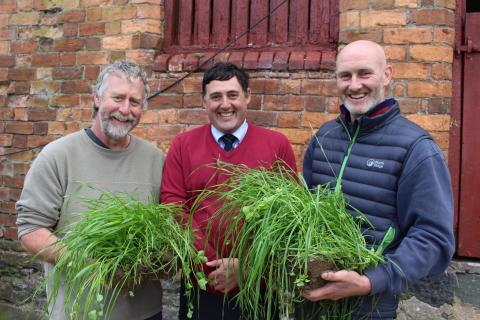At an open day celebrating the 50th anniversary of the Federation of Welsh Grassland Societies, visitors to Llysun, Llanerfyl, near Welshpool, had the chance to learn more about balansa clover. The annual legume, which farmer Richard Tudor first heard about on a trip to America last year, can produce over 6,000kg/ha DM and 28% crude protein on a dry matter basis. Native to the north-eastern Mediterranean, the clover has deep tap roots of up to 45cm that can help soil drainage and water infiltration and it is resilient to cold conditions.
A project exploring the viability of growing balansa clover in Wales compared to other forage crops has just started at Llysun, which is a Farming Connect Demonstration Site. A 20-acre block has been split into the following plots:
- Balansa clover
- 50% balansa clover and 50% diploid Westerwold Ryegrass
- 50% Crimson clover and 50% diploid Westerwold Ryegrass
Despite having only been sown six weeks ago, the trial is already yielding some interesting findings.
“The balansa clover on its own is not looking very good at the moment, apart from where it is closer to the grass nearer the headland and maybe getting a bit more protection. However, the balansa clover and ryegrass mix seems to be doing well,” said Charlie Morgan, an independent grassland advisor who is working on the project.
The plots will be harvested separately and the silage made into bales, with a wet chemistry analysis carried out to identify the forage quality. Making silage with legumes can be difficult because they are generally low in sugars which help fermentation and have more buffering capacity due to higher protein concentrations.
“During this project, we will need to focus on good management techniques during the ensiling process to ensure quality is maintained and losses at feedout are minimised,” says Dr Dave Davies, of Silage Solutions.
After silage has been taken from the plots, lambs will graze them and data on crop yields, lamb growth rates and kg/ha produced will be recorded. A silage feeding trial may also be developed at a later stage in the project.

